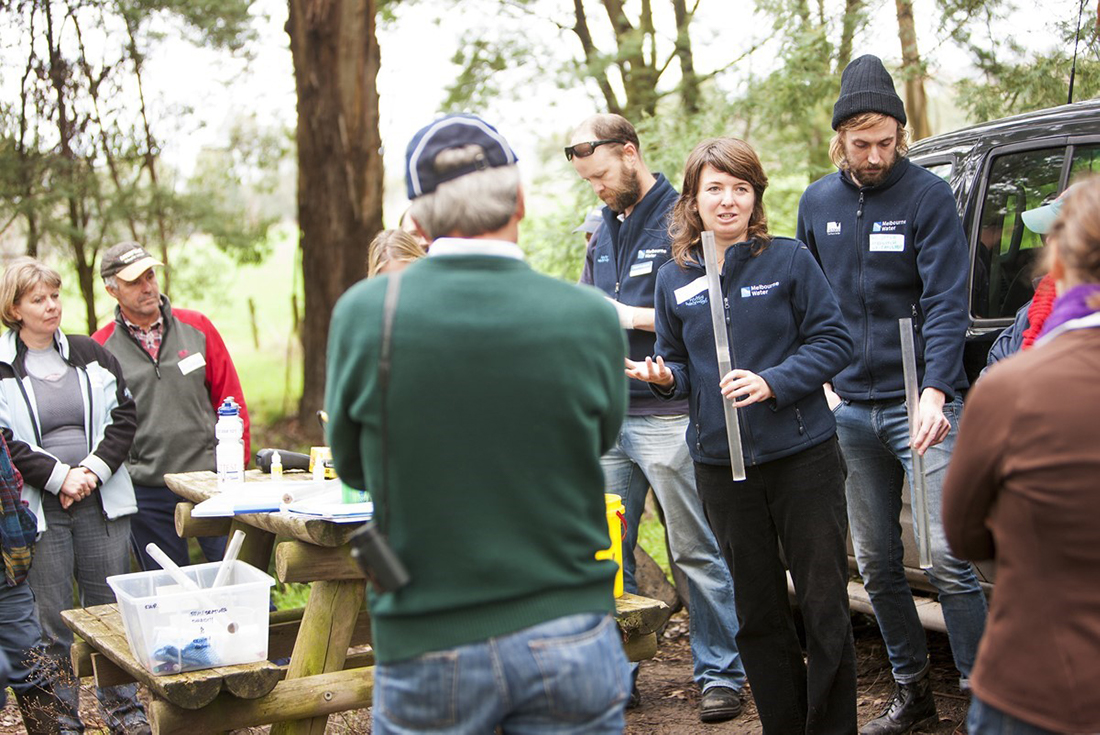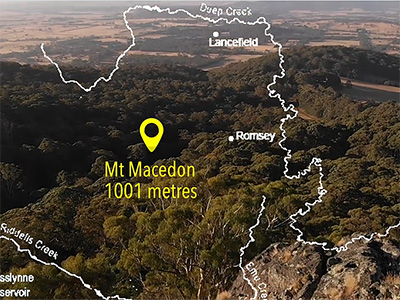Participation is about connecting with community and with place
The more often people connect to waterways the more they appreciate and care about them.
Participation can be attending a festival held along the banks of a river or taking an excursion as a student to Edithvale-Seaford wetlands. It can be reporting a pollution event to the EPA hotline, participating in a tree planting event, applying for a grant to revegetate an area of waterway as a member of a Friends group, or participating in citizen science activities such as Waterwatch or Frog Census.
Participation in these events builds a personal connection with waterways and can also increase community connection through opportunities to meet people and enhance social networks. These activities build knowledge of environmental / ecosystem services and increase knowledge, skills and capacities of community members to care for waterways.
Values supported by participation
Community connection and recreation
Facilitating community participation in a range of activities associated with waterways including social, sporting, cultural and stewardship activities provide the community the opportunity to build connections with each other and with nature.
Participation is measured through activities that indicate engagement with waterways
Participation is measured by determining the percentage of the total population in each sub-catchment that are involved in grants, capacity building programs and citizen science activities related to waterways.
These include participation in Melbourne Water’s Liveable Communities, Liveable Waterways program, Kids Teaching Kids, Clearwater and citizen science programs include Frog Census, PlatypusSpot, Waterwatch, and Birdlife Australia surveys.
There are some limitations to the current participation metric in it doesn’t account for participation that indicates other types of connection to waterways (such as art festivals) nor does it account for recreation participants that utilise waterways. Further work to determine how social values and conditions will be evaluated at mid-term will include work to improve the social values conceptual models and metrics for participation. The inclusion of data collected by strategy partners will also be considered.
For more information on how participation is assessed see the Rivers Monitoring and Evaluation Program.

Participation baseline and targets
2018 baseline: the participation baseline represents the proportion of the community involved in grants and citizen science over the previous three years as a proportion of the total population for the sub-catchment.
2068 target: the target is to increase the participation rate across the region.
Without additional effort, to increase participation it is assumed that that participant rates will remain constant and the population will double in 50 years, thus halving the participation rate.
Number of rivers in each catchment by participation score
Hover, click or tap (on mobile) the charts below to view more information.
Baseline and trajectories in Rivers
Actions to improve participation
Continuing to support community events and groups and providing funding for education and citizen science programs will encourage people to participate in activities to understand and improve waterways and build waterway awareness in the community.
The strategy includes actions to increase participation rates in education, capacity building, incentive programs and citizen science activities to enable greater levels of environmental stewardship for our waterways.

2023 Case study: Caring for Mirrangbamurn — The Maribyrnong River and Waterways Association
An integrated and living natural entity, the Maribyrnong (Mirrangbamurn) River and its catchment represents a vital element of Melbourne's ecosystem, culture, and community in its journey from source to sea. The Maribyrnong River and Waterways Association (MRWA) are a passionate community of people who are a strong, independent voice for the river they love.